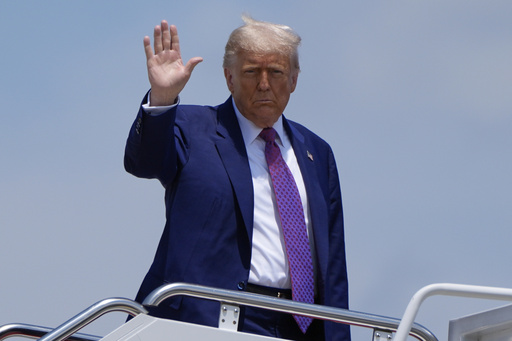In Washington, President Donald Trump’s approach to foreign policy, defined by a strategy of intimidation, is being increasingly scrutinized as leaders prepare for the upcoming Group of Seven summit in Canada. Trump has repeatedly applied pressure tactics, like imposing harsh tariffs, with the belief that countries will concede to his demands. Additionally, he’s made bold statements regarding the potential annexation of Greenland and questioned the United States’ commitment to NATO’s mutual defense pact.
Throughout his tenure, Trump has also used high-stakes meetings with leaders from Ukraine and South Africa as opportunities to assert dominance. However, global leaders are growing more resilient against these tactics. Although aware of the potential repercussions if Trump acts on his threats, many believe that he is more likely to retract his aggressive positions—many of which could harm the U.S.—or be won over by diplomatic flattery.
Jeremy Shapiro of the European Council on Foreign Relations notes that international counterparts are recognizing Trump’s tendency towards intimidation, with increasing resistance in regions like Canada, Iran, China, and the European Union. His observation underscores a pattern where Trump’s threats seldom translate into action, with only two military engagements following his 22 public threats.
Leading up to the G7 summit, subtle resistance is already evident. French President Emmanuel Macron showcased European unity with a Norway visit, while Canada’s Prime Minister emphasized that America no longer dominates global affairs after Trump’s tariffs disrupted the longstanding partnership between the two countries. The Canadian leader remarked that the post-Cold War period solidified U.S. dominance—a status undercut by Trump’s transactional nature that devalues democratic principles and the rule of law.
The geopolitical climate is complex, now further complicated by actions from nations like Israel. This dynamic adds layers to the already difficult G7 discussions, prompting a senior Canadian official to announce that, unlike past summits, there will be no joint communiqué due to anticipated challenges in aligning with Trump. Instead, individual leaders will share their statements on the issues addressed.
Macron articulated a need for cooperation without unilateral dictates from the U.S., warning against a divisive choice between aligning with either America or China. Japan’s Prime Minister Shigeru Ishiba also expressed disapproval of Trump’s tariff policies, emphasizing their potential harm to economic growth, and preferring to focus discussions on such topics rather than the summit itself.
U.S. Senator Jeanne Shaheen sees the summit as a chance for Trump to rebuild relationships to prevent China’s exploitation of G7 divides. She reiterated that foreign leaders consider a partnership with the U.S. vital but are aware of other burgeoning opportunities.
Even with some leaders finding rapport with Trump during official visits, broader international consensus—which often finds itself at odds with Trump’s worldview—poses challenges. The U.K. Prime Minister, Germany’s Chancellor, and Italy’s Premier have all attempted diplomatic engagements, though these interactions reveal underlying tensions related to support for Ukraine and transatlantic trade issues.
Some, like Mark Sobel of the Official Monetary and Financial Institutions Forum, argue that Trump’s policies and approach are alienating allies despite valid concerns regarding Europe’s defense expenditure. Nevertheless, even as surface-level unity is maintained, deeper discord and economic fragmentation loom large over the summit.
In Kananaskis, the gathering of world leaders may further expose these fractures within the G7, spotlighting complex economic challenges in a shifting global landscape.



